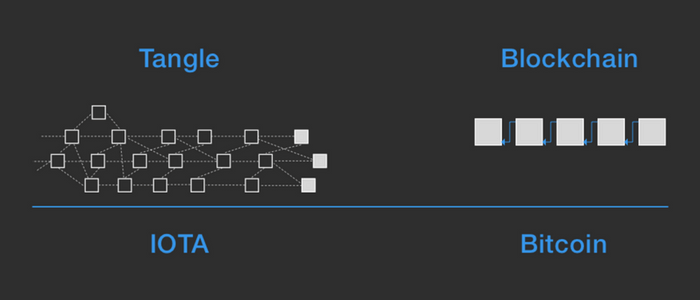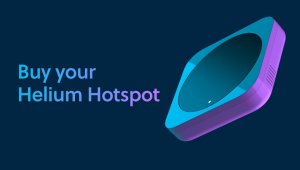The issue of blockchain’s scalability is as old as blockchain itself. If you’re the tiniest bit familiar with the technology, chances are you’re aware of the blockchain’s inability to support millions of transactions at a scale that would enable it to compete with current money transfer systems such as Visa.
When you wade deeper into the scalability debate, you’ll soon hear such terms as IOTA, Tangle, and directed acyclic graphs (DAG). What do these terms mean, and is Tangle a threat to blockchain?
In this piece, we’ll explain what Tangle is, how it stacks up to blockchain, and whether we can see a future where it replaces Bitcoin or becomes its formidable match. We’ll also give our verdict on which technology is currently more superior.
What Is Tangle?
The Tangle is a network that aims to achieve the same purpose as blockchain: facilitate transactions in a trustless and decentralized environment. Tangle is an implementation of the directed acyclic graph (DAG) – which is also a distributed ledger like the blockchain. Also, much like the blockchain, DAGs do not have intervening authority or entity such as a bank or a government.
This is where the similarities end. Tangle has special features designed to facilitate the ‘Internet of Things’ (IoT). IoT is a universe of interrelated devices that can interact with one another through a multitude of little unique identifiers to enable them to execute the functions they were designed for without requiring human or computer intervention.
Unlike how it sounds, the internet of things is not that complicated a concept. Imagine a shower switching itself on 5 minutes before you arrive, or a coffee machine that makes coffee 5 minutes before you wake up, or a washing machine setting itself on – all without any sort of input from you.
If this technology is to work as it’s meant to, there must be an underlying network that can handle a massive amount of transactions- from facilitating exchanges, to transferring data, to sending of signals – all in a seamless, secure and fast network.
Enter Tangle. This technology is based on DAG, which is designed to support a plethora of data interactions but will facilitate the IoT in a way that the blockchain cannot. These features are like the following:
No miners: Unlike the blockchain, there are no miners in the Tangle network. This eliminates the need for fees, or miners being able to block some transactions.
More relaxed data transfer rules: This makes Tangle more agile than the blockchain and thus better for handling a vast amount of transactions.
Scalable data units: This feature facilitates the transfer of training bits of data, enabling Tangle to process micro-transactions.
The pros and cons of Tangle:
Pros
- Zero fees
- Faster transaction times
- Scalable
Cons
- The technology is not yet tested and proven
- Does not support decentralized applications
- Arguably less secure
- Centralized – Tangle relies on a ‘central coordinator node’ that checkpoints valid transactions
What Is Blockchain?
Blockchain is the technology that supports cryptocurrencies such as Bitcoin, Ethereum Litecoin, and so on. Blockchain is a ledger that holds transaction blocks – which are linked to each other and secured using cryptography. Each block has a reference to the block that came before it, hence a ‘chain.’
Each node (miner) independently verifies the authenticity of a transaction – meaning that transactions are agreed upon via group consensus. The miner who confirms a block of transactions receives block rewards or a fraction of the transaction fees. Miners usually invest considerable sums of money in a special mining computer known as application-specific integrated circuit (ASICs).
Blockchains, like the Ethereum blockchain, can facilitate the creation of a special type of applications called decentralized applications (DApps). DApps are, unlike today’s applications (such as Facebook or Google), under no one’s authority or censorship. Also, DApps grant users the complete autonomy of their personal data – which is the complete opposite of how legacy applications handle users’ data.
Bitcoin’s Scalability Issues
The current blockchain architecture faces serious scalability issues. The fact that each node must verify transactions before they are added means confirmation is slow. The limited size of blocks, e.g., 1MB for the Bitcoin blockchain, is another bottleneck since a very limited amount of data can fit in each block.
Now, as more people transact on the blockchain, the more clogged it becomes. This means longer waiting times and increased fees, which leads to unsatisfied users. This has led to several hard forks of the Bitcoin blockchain – all which sought faster transactions and lower fees.
Let’s take a quick look at the pros and cons of the blockchain.
Pros:
- A proven history of reliability
- A secure system that is difficult to compromise
- Layer 2 Solutions such as the lightning network are being explored to remedy the scalability problem
Cons:
- The blockchain is not scalable on its own
- High fees and long waiting times
Differences between Tangle and Blockchain
While only a few technical differences distinguish blockchain and Tangle, those differences are significant nevertheless. Let’s take a look:
Structure – blockchain comprises a series of cryptographically connected data blocks. Tangle, on the other hand, consists of a group of data nodes that flow in just one direction. Also, blockchain can double back on itself in a circular manner, but Tangle can only move in one direction. (This means that Tangle can more rapidly transfer data.)
Security– blockchain offers better security thanks to its extremely meticulous block confirmation process that involves solving computational puzzles and verification of transactions via group consensus. On the other hand, Tangle’s security feature entails validating the two most recent transactions before confirming the next. By this measure, blockchain is more secure than Tangle.
Decentralization – blockchain is undoubtedly decentralized since it operates on thousands of computers around the world, with no single authority overseeing transactions. Tangle is also billed as decentralized, but it utilizes a safeguard that it calls a ‘coordinator node.’ The presence of the safeguard renders Tangle centralized, one way or another. It’s hard to say that the tangle framework is entirely autonomous.
Tangle fans argue that the technology’s less detailed node addition protocol might make it less secure than blockchain, but it also makes it more agile. They stress that this makes Tangle better equipped to handle massive volumes of IoT interactions. But this uncertainty and its security, as well as its centralization problem, means the technology is far from ripe to fulfill its intended purpose, let alone compete with blockchain.
What is IOTA?
Tangle’s only application to date is the IOTA cryptocurrency. IOTA is named after IoT, which it’s designed to facilitate. IOTA can handle a multitude of tiny transactions, which makes it ideal for the micro-transactions that run an internet of things.
As of March 30, 2020, IOTA is trading at $ 0.142212 at a market rank of 24 with a $ 395, 282, 148 market cap.
For its part, Bitcoin is trading at $ 6, 316.03, and it ranks at number one with a market cap of $115, 552, 963, 908.
Blockchain Vs. Tangle: Which Is Better?
As the debate about which of the two technologies is better rages on, it helps to look at the specifics. To begin with, Tangle is yet to be proven as opposed to Bitcoin, which has been a mainstay for ten years now. Also, it doesn’t have nearly half of the number of users on the Bitcoin network.
Additionally, IOTA is at risk of a 34% attack, as opposed to Bitcoin’s 51%. This means that an attacker would only need to gain control of 34% of the IOTA network, rendering it less secure than blockchain.
As previously mentioned, IOTA utilizes a coordinator node that synchronizes data among all nodes, making it centralized. This is in contrast with Bitcoin, whose nodes are equally distributed across the globe.
From these observations, it’s clear to see that blockchain maintains the upper hand in the battle between the two Technologies – at least for now. This does not mean that IOTA’s completely written off. It is, on its own, a force to reckon with, as evidenced by its fiercely loyal community as well as a strong value proposition.





